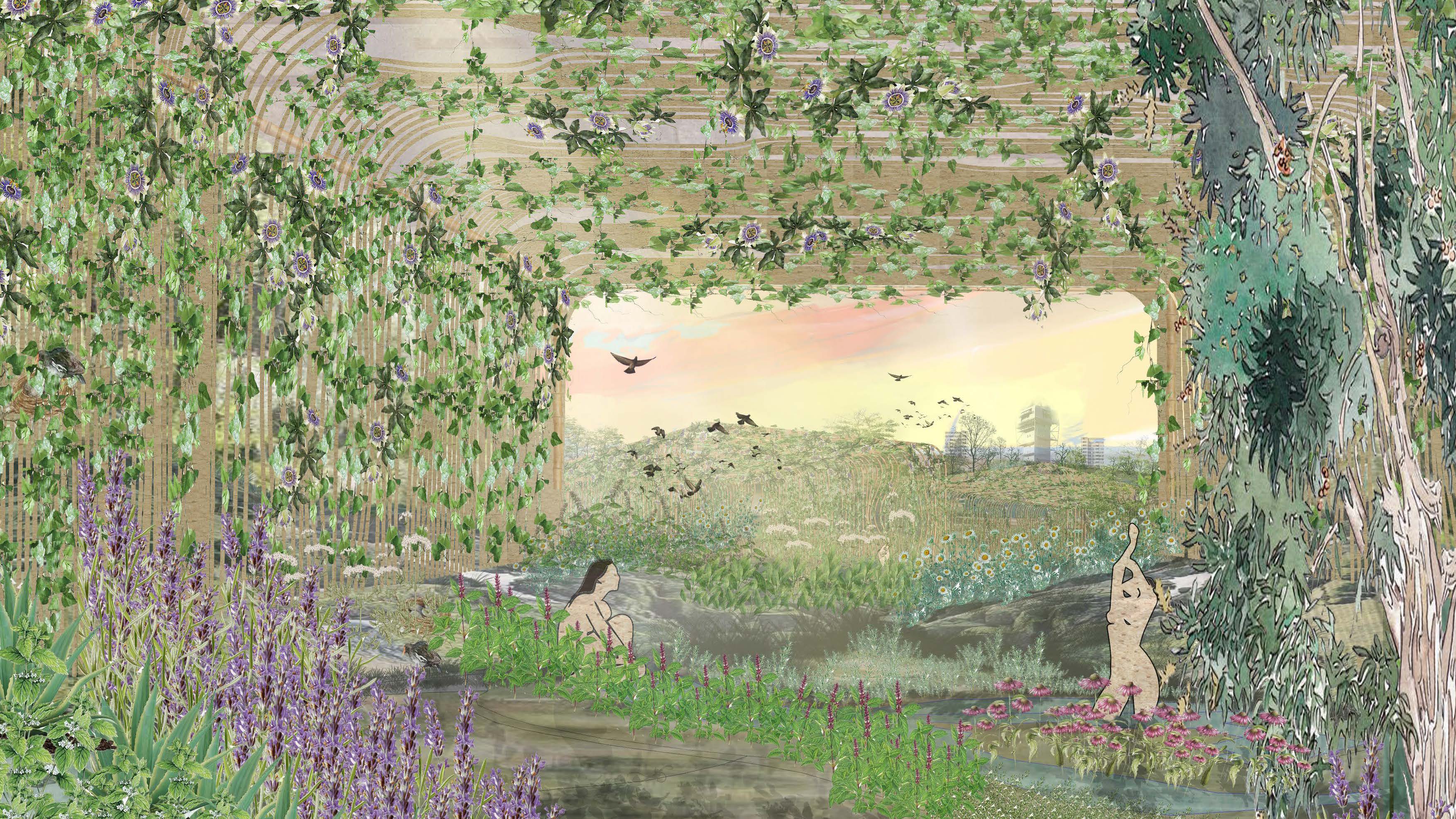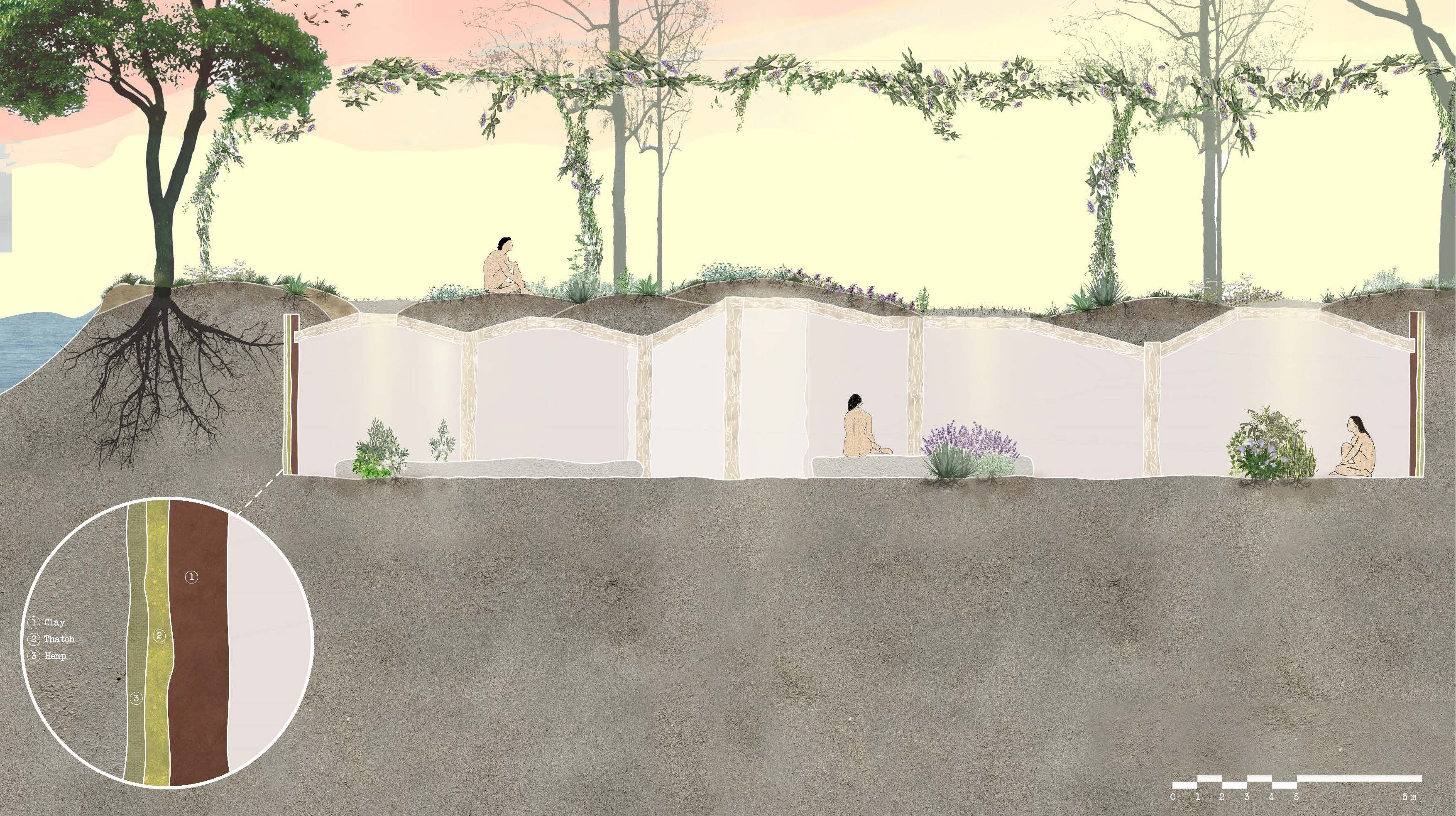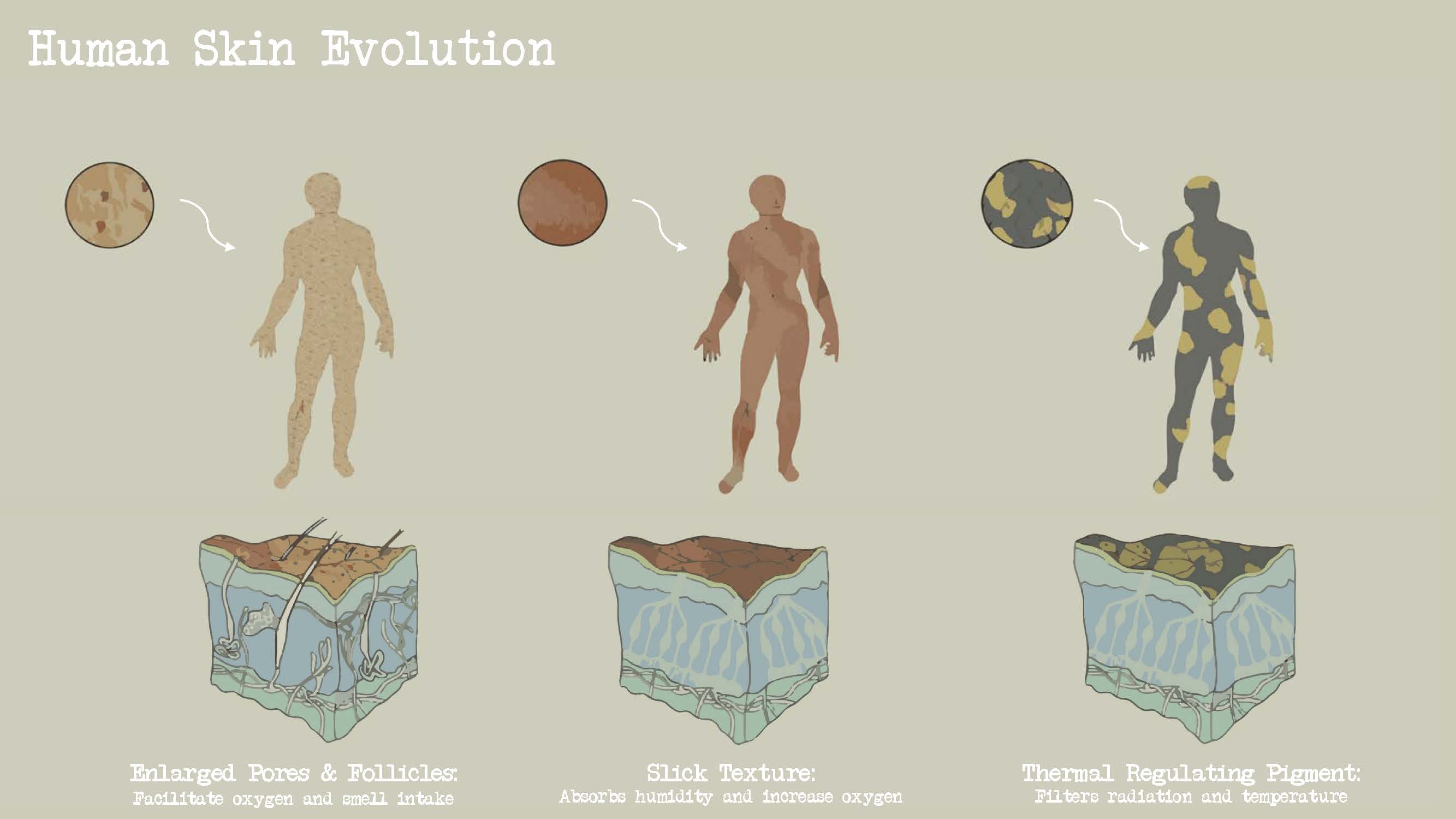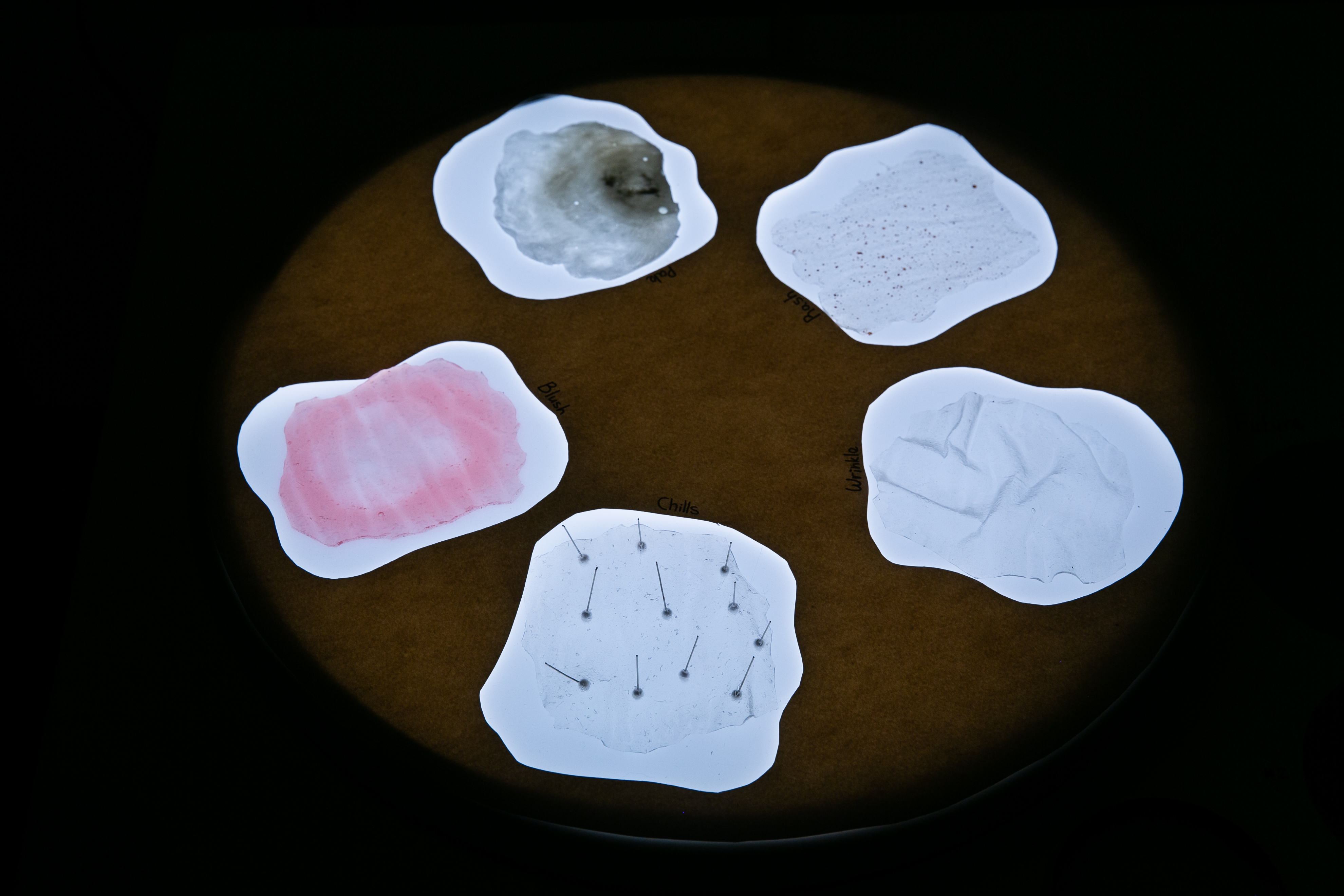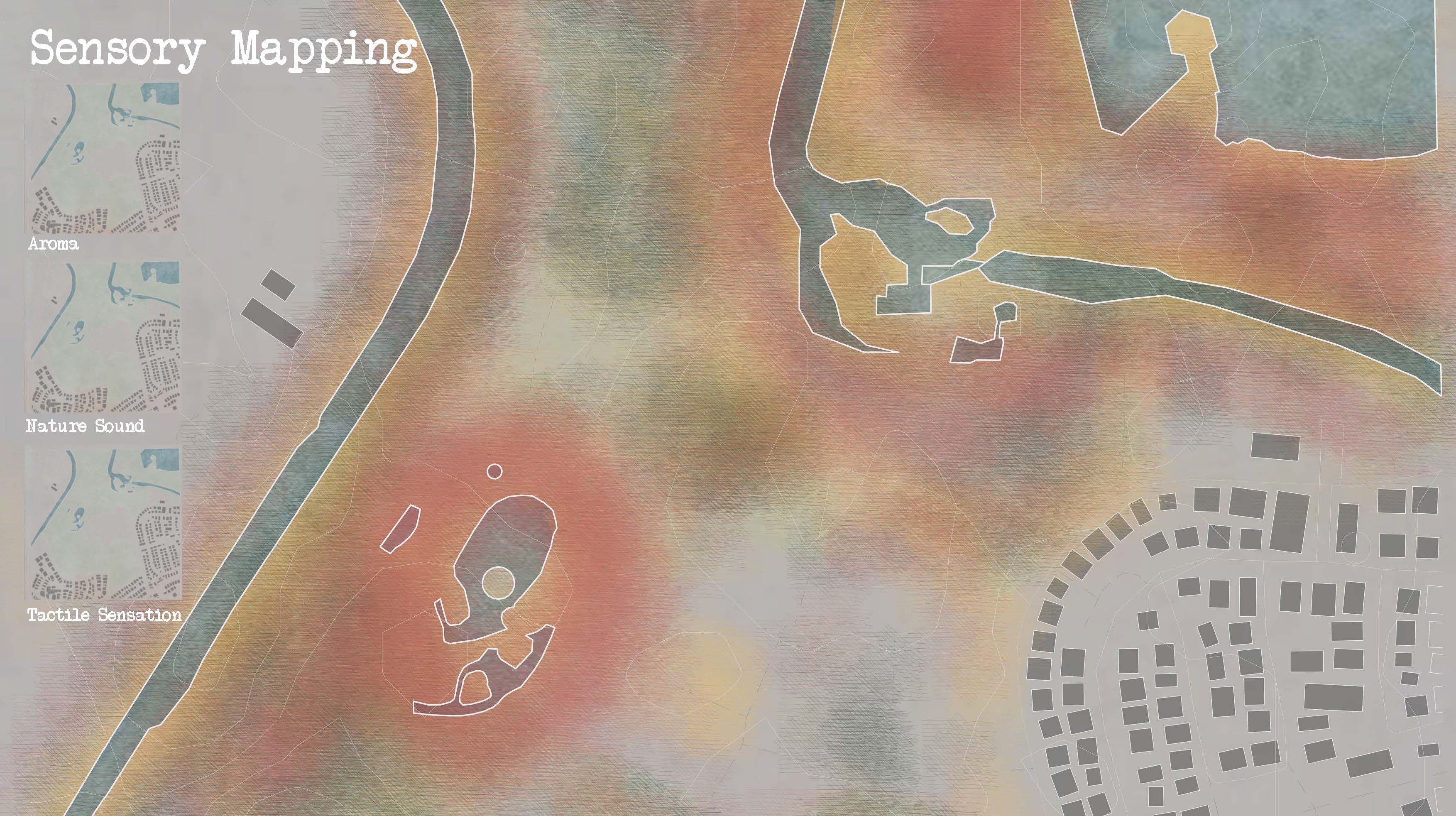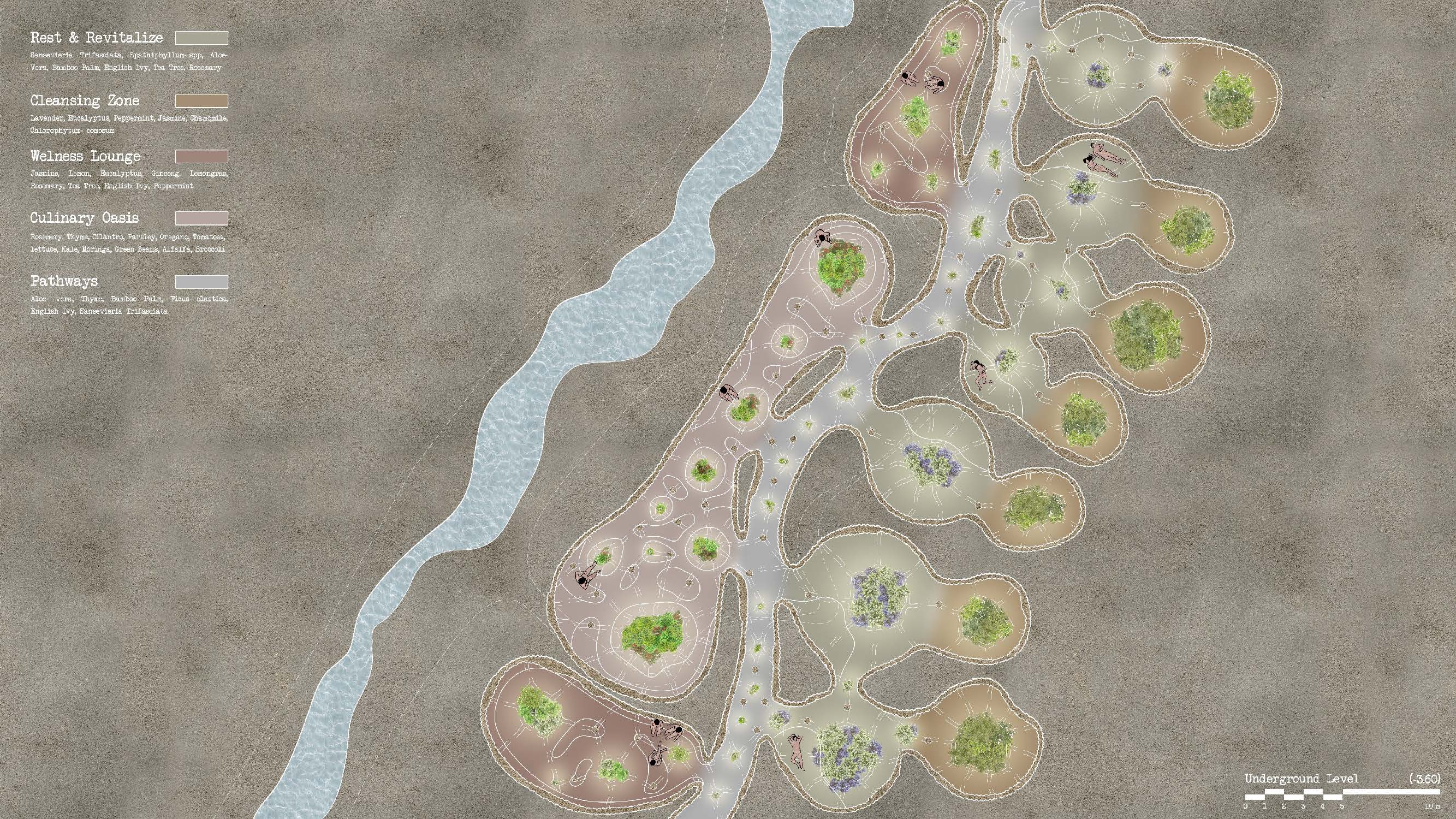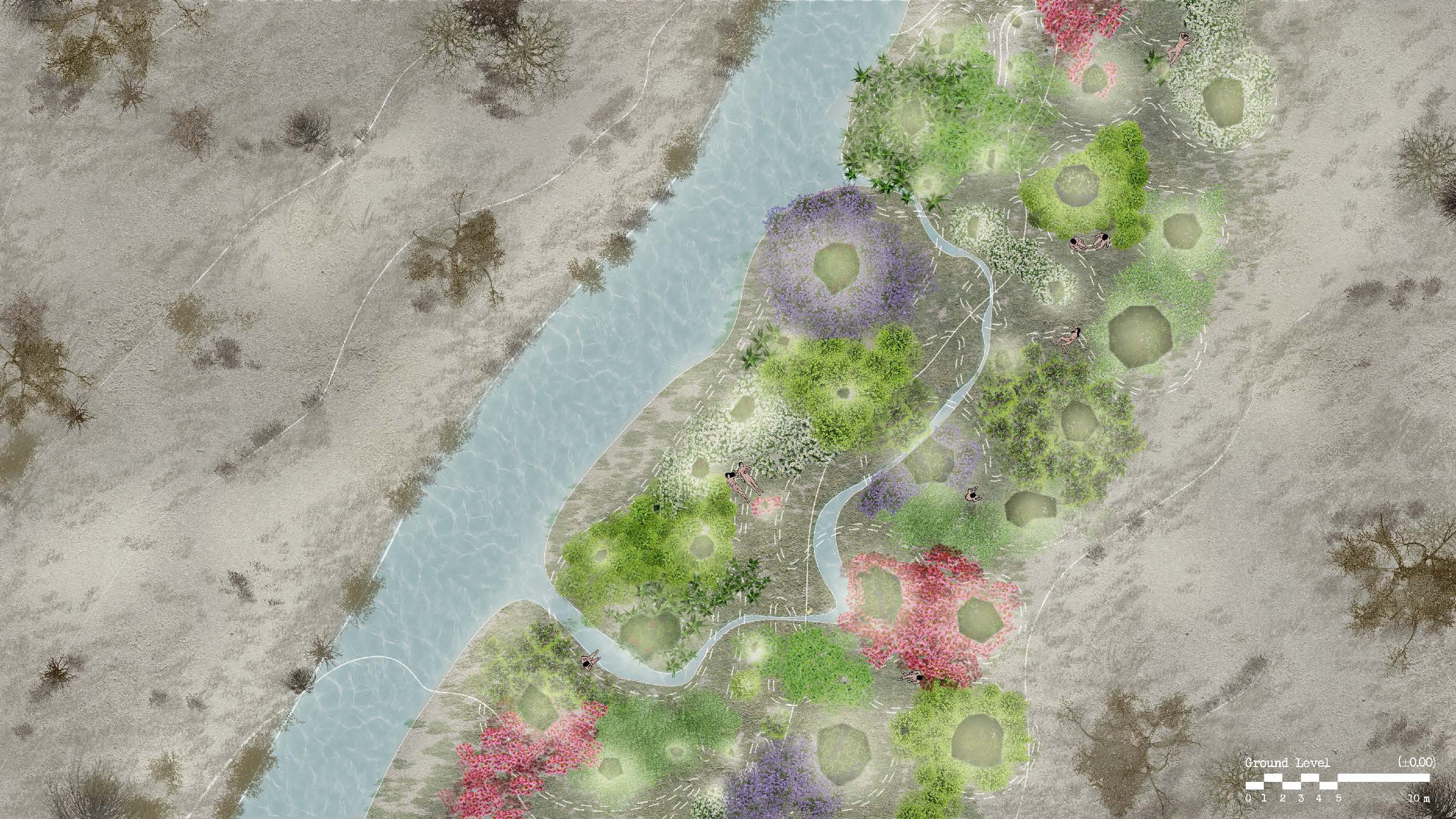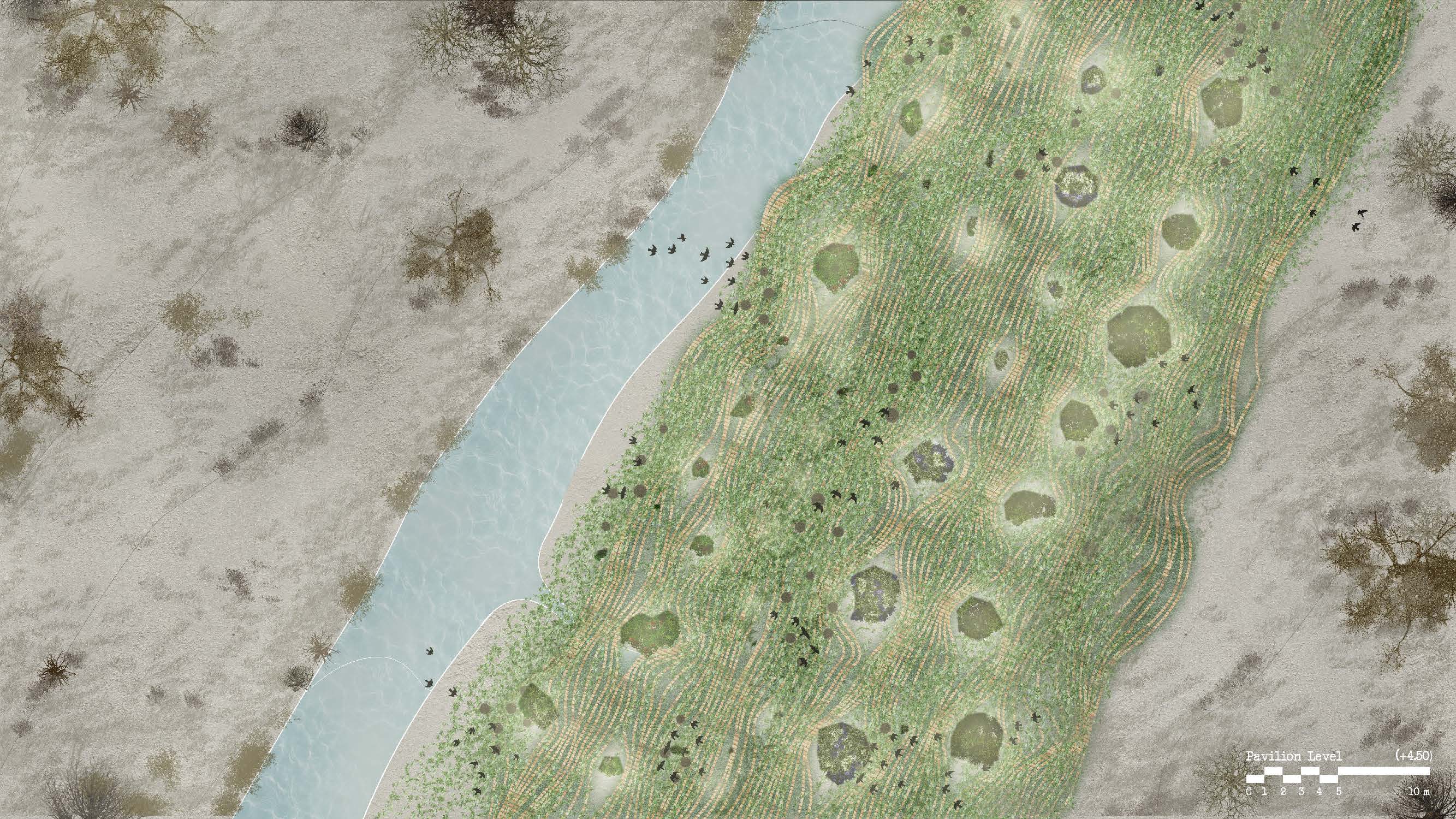At the height of the Anthropocene,
humans will face extreme air pollution, significant temperature increases,
various types of radiation, the contamination and salinization of water sources,
floods, and other natural disasters. In these conditions, morbidity rates in
the general population will rise, affecting many systems in the human body,
including the largest organ, the skin. However, evolutionary, cultural, and
social changes will help humans adapt to the new world.
The skin, as part of the human body's
stress-response system, affects the human’s mental state and is affected by
it in turn. Humans will develop the ability to breathe and smell through
their skin, strengthening these mind-body connections. Humans will establish
rehabilitative spaces for their skin in the wetland habitats of the Yarkon
River. As the locals develop a heightened sense of smell and touch, the
architecture of these rehabilitative spaces will incorporate the ability to
touch and smell medicinal plants. The new spaces will be constructed from
living plants and natural materials, enabling other species to coexist with
humans and thrive together in harmony.
|


